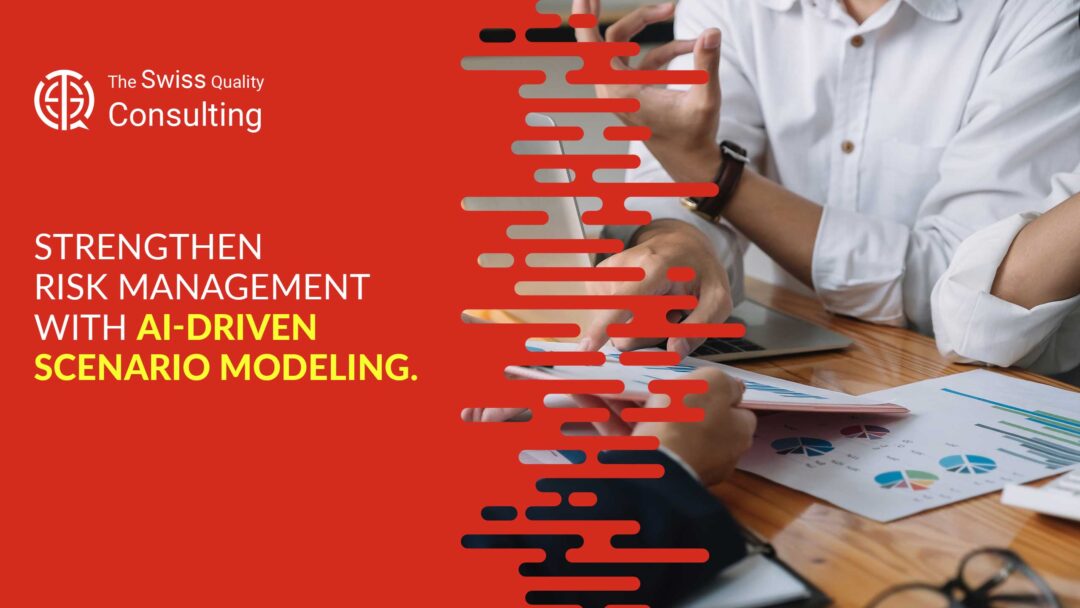Transforming Risk Management with AI-Driven Scenario Modeling in Risk Management
Introduction
In today’s rapidly evolving business landscape, AI-driven scenario modeling in risk management has become an indispensable tool for companies seeking to strengthen their risk management strategies. This article aims to enlighten business executives, mid-level managers, and entrepreneurs about the benefits and applications of AI-driven scenario modeling in mitigating risks and enhancing decision-making.
The Importance of Advanced Risk Management
In today’s dynamic and unpredictable business environment, risk management has emerged as a cornerstone of organizational success. It encompasses the systematic identification, assessment, and prioritization of potential risks that could disrupt operations, hinder growth, or damage an organization’s reputation. By proactively addressing these risks, organizations can safeguard their assets, protect their financial stability, and ensure long-term sustainability.
Traditional risk management processes often rely on historical data and subjective assessments, leading to potential gaps in risk identification and inaccurate evaluations of risk severity. In recent years, the integration of AI-driven scenario modeling into risk management practices has revolutionized the way organizations anticipate, analyze, and prepare for potential risks. These sophisticated algorithms, powered by machine learning and artificial intelligence, can process vast amounts of data, identify patterns, and simulate potential scenarios, providing organizations with more accurate and actionable insights into risk probabilities and potential impacts.
AI-driven scenario modeling offers several key benefits for risk management:
Enhanced Risk Identification: AI algorithms can analyze complex datasets, including historical data, market trends, and industry forecasts, to identify emerging risks that may not be apparent through traditional methods.
Accurate Risk Assessment: AI models can assess the likelihood and potential impact of various risk scenarios, providing organizations with a more comprehensive understanding of the severity of each risk.
Predictive Analytics: AI algorithms can analyze trends and patterns in data to predict future risks, enabling organizations to take proactive measures to mitigate potential disruptions.
Stress Testing: AI models can simulate various stress scenarios, such as economic downturns or supply chain disruptions, allowing organizations to test their resilience and identify potential vulnerabilities.
Continuous Monitoring: AI algorithms can continuously monitor risk indicators and provide real-time updates, ensuring that organizations are always aware of emerging risks and can adapt their strategies accordingly.
The integration of AI-driven scenario modeling into risk management processes is not merely a technological advancement; it is a strategic imperative for organizations seeking to thrive in today’s complex and risk-laden business environment. By harnessing the power of AI, organizations can gain a deeper understanding of potential risks, make informed decisions to mitigate those risks, and protect their long-term success.
Proactive Versus Reactive Risk Management
AI-driven scenario modeling shifts risk management from a reactive to a proactive approach, enabling businesses to anticipate and prepare for potential challenges before they manifest.
AI-Driven Scenario Modeling in Change Management
Incorporating AI-driven scenario modeling in risk management is particularly crucial during periods of change. It provides businesses with data-driven insights to navigate uncertainties and make informed decisions during transitions.
Adapting to Change with Confidence
Utilizing AI for scenario modeling helps businesses understand the potential impacts of change, allowing them to adapt strategies effectively and with greater confidence.
Impact on Executive Coaching and Leadership
Leadership plays a pivotal role in effective risk management. Executive coaching programs increasingly focus on training leaders in the use of AI-driven tools, like scenario modeling, to enhance their risk management capabilities.
Empowering Leaders with AI Tools
Leaders are taught to leverage AI-driven scenario modeling for strategic planning, enabling them to foresee risks and develop robust contingency plans.
Improving Communication with AI-Driven Insights
Effective communication is essential in risk management. AI-driven scenario modeling provides a clear, data-backed basis for communication, ensuring that all stakeholders understand the potential risks and the rationale behind risk mitigation strategies.
Enhancing Team Collaboration in Risk Assessment
By providing a unified view of potential risks, AI-driven scenario modeling fosters better collaboration among teams, leading to more cohesive risk management efforts.
Generative AI in Advanced Risk Modeling
Generative AI takes scenario modeling to the next level by generating a wide range of potential scenarios, including those that might be overlooked by traditional methods. This leads to a more comprehensive risk assessment and stronger risk mitigation strategies.
Expanding the Horizon of Risk Assessment
Generative AI can simulate numerous complex scenarios, offering a broader perspective on potential risks and equipping businesses to handle a variety of challenges.
Conclusion
In conclusion, AI-driven scenario modeling in risk management is a vital component of modern business strategy. It not only strengthens risk management practices but also supports effective change management, leadership development, and decision-making, ultimately enhancing business resilience and success.
#AIDrivenRiskManagement, #ScenarioModeling, #BusinessResilience, #LeadershipInTech, #StrategicPlanning









